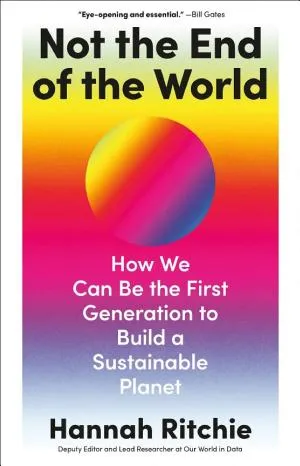
The classic definition of sustainability came out of a landmark report from the United Nations. In 1987, the UN defined sustainable development as ‘meeting the needs of the present without compromising the ability of future generations to meet their own needs’. That definition has two halves. The first is making sure that everyone in the world today - the present generations - can live a good and healthy life. The second half is about making sure that we live in a way that doesn’t degrade the environment for future generations. We shouldn’t create environmental damage that takes the opportunity of a good and healthy life away from our great-great-grandchildren.
A lot of the controversy about these definitions is because we assume there is an unavoidable trade-off between the first and second half. It’s human well-being or environmental protection. That means one must be prioritised over the other, and for ‘sustainability’ it’s the environment that wins. This trade-off existed in the past. But the central argument throughout this book is that this conflict does not have to exist in our future. There are ways to achieve both at the same time, which means there should increasingly be less conflict between the definitions. So, if you still want to adopt an environment-only definition, then think of human flourishing as a nice add-on.
There is another important reason why degrowth will not build a sustainable future. Degrowth argues that we can redistribute the world’s wealth from the rich to the poor, giving everyone a good and high standard of living with the resources already at our disposal. But the maths doesn’t check out. The world is far too poor to give everyone a high standard of living today through redistribution alone.
This journey is often called the ‘Environmental Kuznets Curve’: plot an environmental metric against income and it forms an upside-down ‘U’ (it’s low when we’re poor; it rises to reach its peak at middle incomes; then falls again as we get richer). There are lots of environmental metrics where this Kuznets Curve doesn’t hold true. But it works for air pollution, which means we can tell what stage of economic development a country is in just by drawing a curve of how polluted its air is. India, for example, is just approaching its turning point. It’s on the brink of peak pollution. As seen earlier, China is further ahead and has now passed the peak.
The solution to air pollution - as we saw earlier - follows just one basic principle: stop burning stuff. We need to find a way of producing energy without burning things. Or, if we do, we need to capture the particles safely and make sure they don’t make it out into the atmosphere. Many countries are not far away from this step. The world’s poorest are lagging behind, but they could already get pretty far by burning different things for energy.
The world has already passed the peak of per capita emissions. It happened a decade ago. Most people are unaware of this.
These comparisons are fun and nerdy. But sometimes they can do more harm than good. I can justify spending a lot of time on them because it’s my job. But people shouldn’t be stressed out by every tiny decision they make. It can get overwhelming. Tackling climate change feels like a massive sacrifice that has taken over our lives. That would be okay if all of these actions were really making a difference, but they’re not. It’s misplaced effort and stress, sometimes even at the cost of the few actions that really will matter. There is a concept called ‘moral licensing’: it explains the psychological trick we play on ourselves where we justify one behaviour because we’ve made a sacrifice somewhere else. So, we go for the steak because we’ll recycle the plastic wrapper it comes in. Or, we’ll drive rather than cycle across town because we used the ‘eco-friendly’ setting on the washing machine.
[D]oes eating locally really reduce your carbon footprint? Was it me or them that had it wrong? Over the next year I found scientific paper after scientific paper all pointing to the same conclusion: what we eat matters much more for our carbon footprint than how far it has travelled to reach us.
I get it: there’s no need for our food to be wrapped in five layers of plastic. Companies overdo it, often adding extra bits of packaging so that they can make products look pretty, or show their branding off. But a move to zero packaging would be a disaster. We’d end up with even more food waste, which would be worse for the environment.